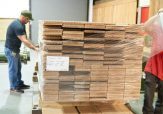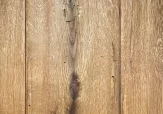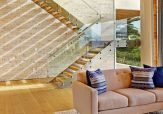The Best Hardwood Flooring for Homes With Dogs
Silver Lab and English Shephard on Rift & Quarter Sawn White Oak Flooring
Can Dogs & Hardwood Flooring Co-Habitate?
You love your pup as much as your first child; they're a cherished member of the family. You’d also love to install hardwood flooring in your home. But you are understandably concerned: Can your pup's sharp claws and hardwood flooring get along? The answer is, yes, they can.
There are some things to consider to make sure your pup doesn’t wear out its welcome. Most obviously, you’ll want to choose the appropriate wood species, taking into consideration hardness, scratch resistance, as well as grain pattern, and color. You’ll also want to consider what kind of finish is applied on it, in addition to some strategies to help minimize the potential impacts your pets might have.
The Type of Wood
When it comes to durability, not all wood species are not created equal – and the variability is far more nuanced than just the difference between softwood and hardwood. Immediately removing softwoods from the discussion is a good starting point, as pet claws will impact even the sturdiest softwoods. But within the realm of hardwoods, hard is a relative term with some species being inherently twice as hard as others, and the rest falling somewhere in between.
A scale developed over 100 years ago by Austrian wood researcher Gabriel Janka measures how many pounds per square inch of force are required to imbed a steel ball halfway into a wood plank. His Janka scale documents that the hardest domestic options include (in descending order) Hickory, Maple, White Oak, Ash, Red Oak, and Yellow Birch. This is a good starting point.
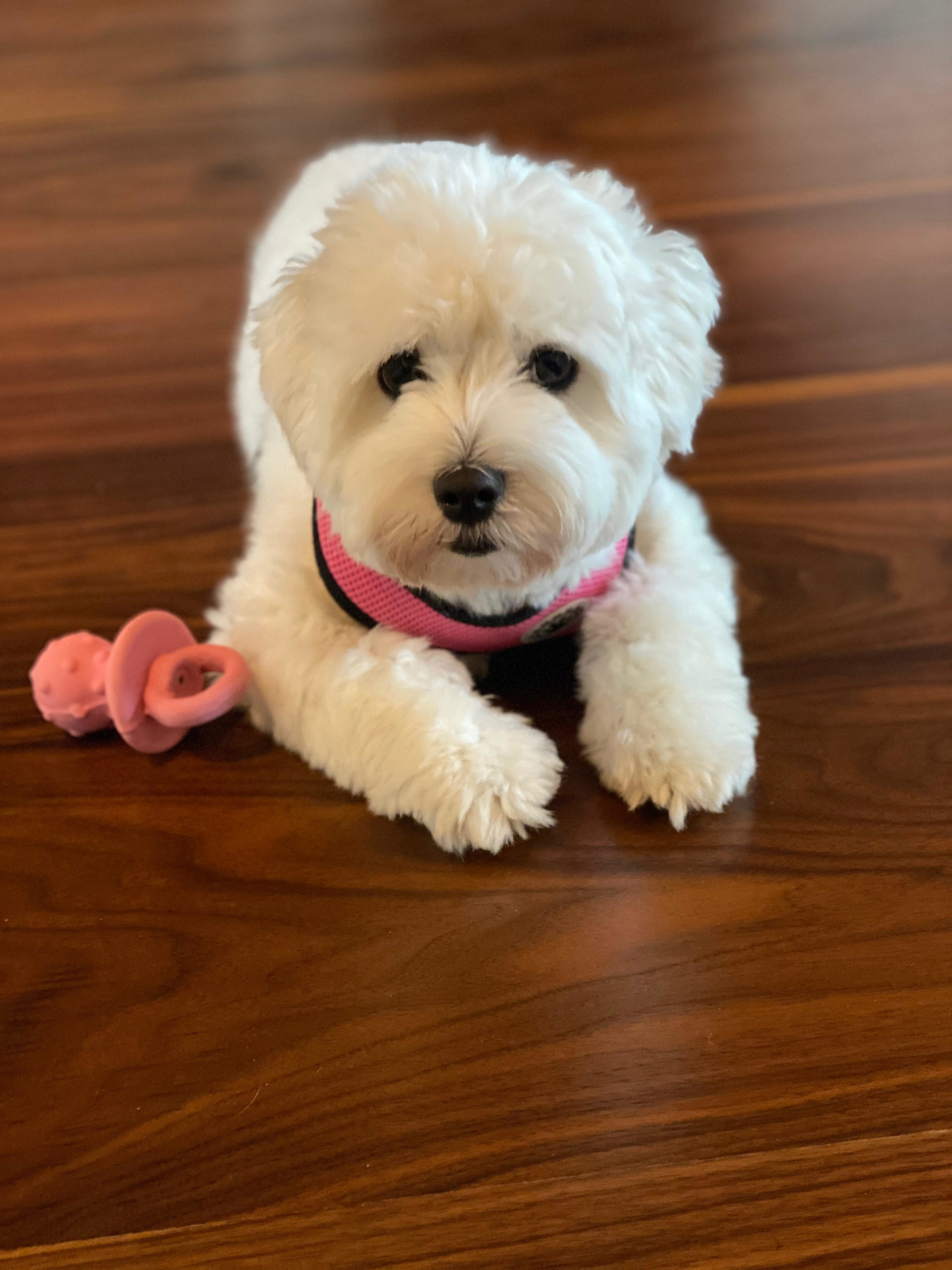
Maltese poses on Hardwood Walnut Fooring
Consider the Finish
Embedding a steel ball in a plank suggests the ability to resist denting, which is not exactly the same as resisting surface scratches - though hardness plays a role in that as well. Equally important is the type of finish that is applied to the wood planks.
Different finishes provide different types of protection. They are most easily differentiated by whether they create a protective shell over the surface, called a surface finish, or whether they seep into the wood’s pores before hardening, known as penetrating finishes. In general, penetrating finishes will provide less protection against scratches, though when scratches do occur, they can be repaired by providing a spot sanding and then re-coating the damaged area rather than requiring an all-out refinishing.
Surface finishes generally provide greater protection against scratching, especially oil-based polyurethane and acrylic urethane, but will more readily show the scratches when they do occur and are harder to repair, most likely prompting a complete refinishing as opposed to a touch-up. In general, satin and matte finishes are a better option for pet owners than glossy or high sheen finishes, as a higher gloss will show scratches from the light reflecting off of it. Click here for a more in-depth review of finish options.
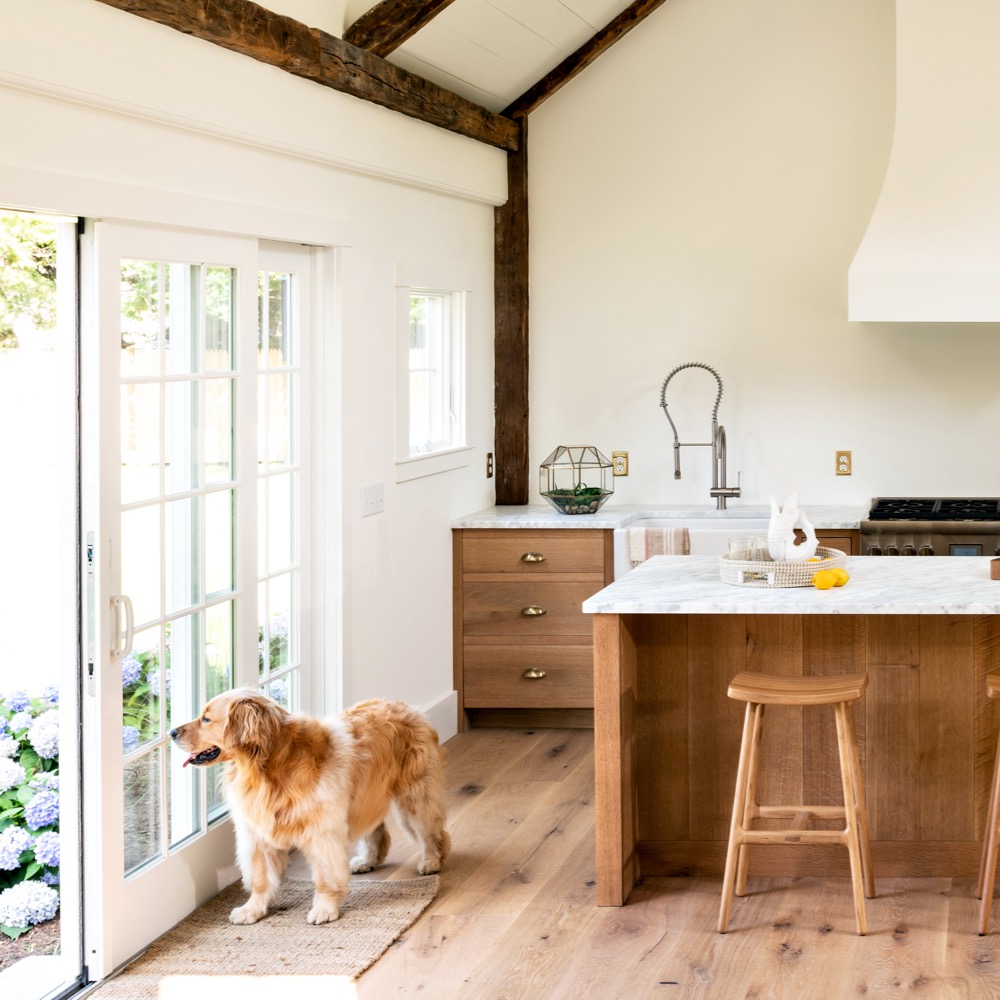
Golden Retriever on Wide Plank Character White Oak Fooring
Hiding Versus Preventing Scratches
Another tactic is to accept the reality that scratches will undoubtedly occur, and as such, to consider ways to minimize their impact. Returning to species selection, with this strategy in mind, it makes sense to take notice of a few additional personality traits of each wood species beyond their hardness, especially the coloration and the graining. Species with very light or very dark coloration tend to show scratches more readily, so aim for coloration that is not too extreme one way or the other. And species with varied coloration tend to camouflage scratches that would be highlighted by more uniform coloration.
Another means of veiling scratches is to select a species possessing vibrant grains, such as hickory or oak. Pronounced grain patterns do a great job of camouflaging damage, as well as dirt, dander, and fur your dog may have left behind.
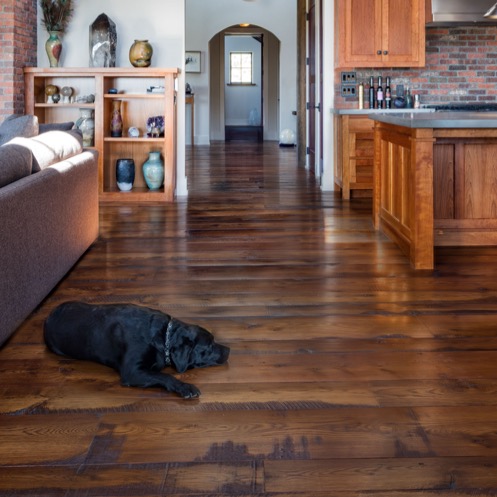
Black Lab snoozes on Distressed White Oak Plank Fooring
Collaborate with your Pup
Human behaviors have the potential to do just as much damage as our pets, except we should know better! Many scratches come from pebbles, dirt, and detritus caught in the soles of our shoes. Making it a habit of removing shoes in the house can go a long way toward maintaining your floors in more pristine conditions.
Well-placed throw rugs and area rugs can provide your floors with paw protection in critical high traffic spots (not to mention a comfortable place for your pooch to curl up).
Affixing felt pads or rubber floor protectors under the legs of chairs and tables is yet another no-brainer, as is simply keeping on top of sweeping, vacuuming, and mopping, as the less extraneous matter there is on the floor, the less likely it will be stepped on, crushed, or ground into those lovely hardwood planks. Also, consider purchasing (and using) a dog nail trimmer, or regularly visiting the dog groomer. A little paw pedicuring can go a long way toward keeping your wide plank hardwood floors looking pristine.
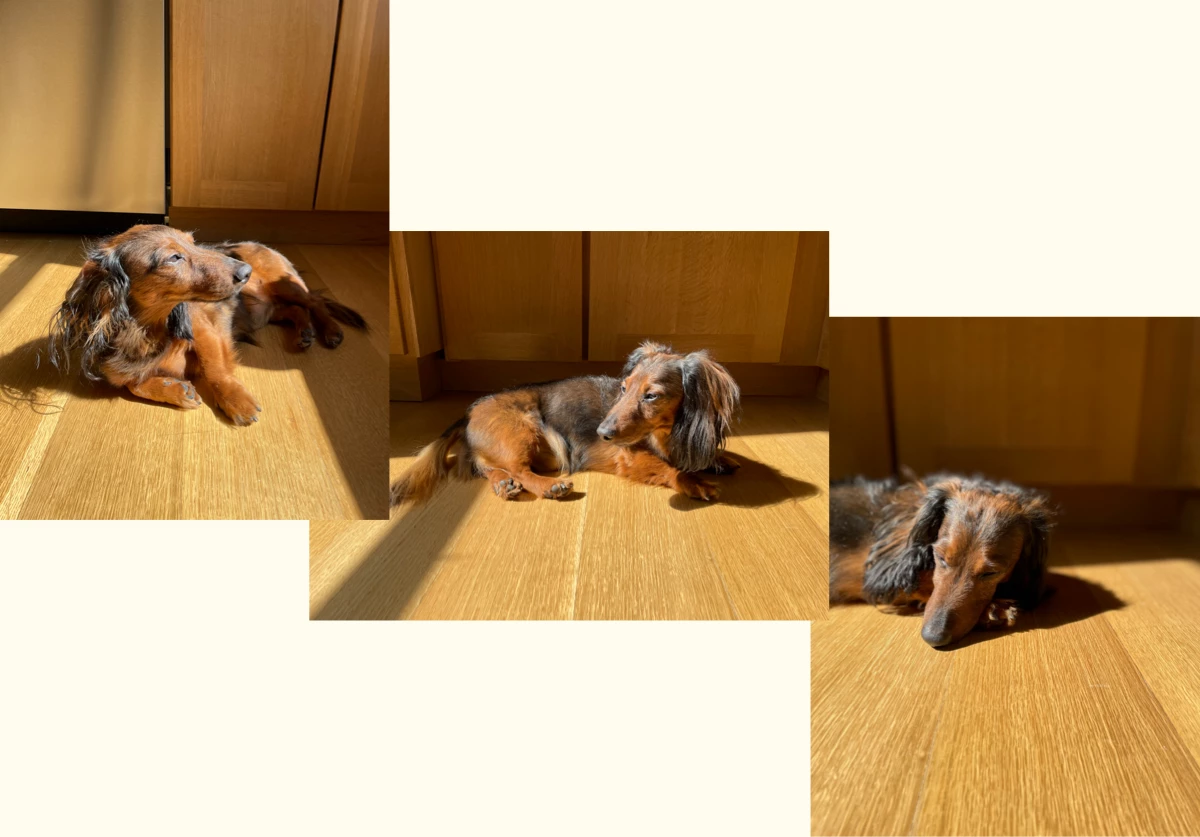
Long Haired Dachshund poses cooly on Rift Sawn White Oak



